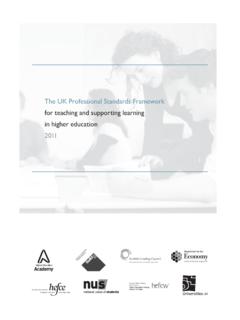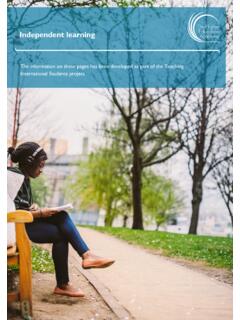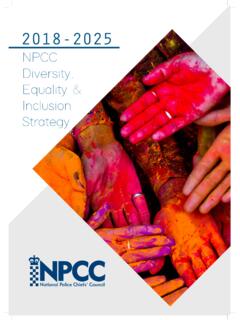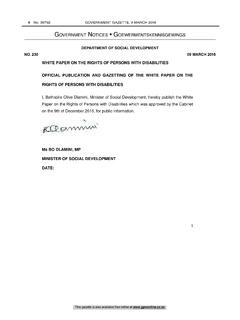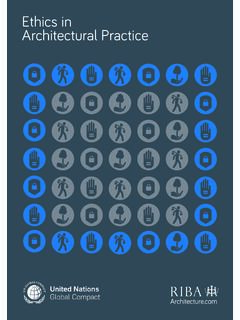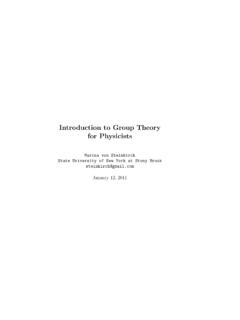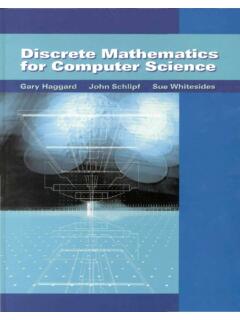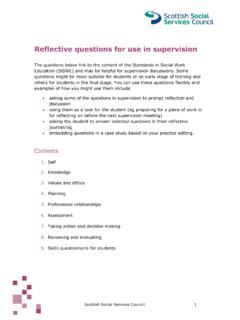Transcription of Embedding Equality and Diversity in the Curriculum
1 Embedding Equality and Diversity in the Curriculum : a model for learning and teaching practitioners Dr Pauline Hanesworth Embedding Equality and Diversity in the Curriculum The following model of Embedding Equality and Diversity in the Curriculum (EEDC) should be read in partnership with the EEDC self-evaluation framework. The framework considers EEDC through the focus of whole institutional activities. The model considers EEDC through the lens of Curriculum design, delivery and assessment. It is a tool to allow change in practice on the level of classroom, module and programme of study. It has been developed under the belief that it is in the classroom that change can truly occur. Hence, the model will be of most use to learning and teaching practitioners, from graduate teaching assistants, to lecturers, to programme leaders, heads of schools, staff developers and deans of learning and teaching.
2 Equality and Diversity practitioners based in the UK higher education (HE) sector, may also find it of use. The model has been devised following consultation with the UK HE sector. The ideas generated within have developed from the research and outputs of the Scottish Funding Council-funded, Higher Education Academy Scotland-led EEDC project, discussions with HE faculty across disciplines, outcomes resulting from consultations with higher education institutions (HEIs) on Equality and Diversity in learning and teaching, ideas generated from a plethora of interdisciplinary workshops and seminars conducted with faculty and students across the UK, personal experiences in HEIs and concepts and practices described in relevant research. With regard to the latter, especial influence has derived from: Clayton-Pedersen, A.
3 R., O Neill, N. and McTighe Musil, C. (2009) Making excellence inclusive: a framework for Embedding Diversity and inclusion into college and universities academic excellence mission. Association of American Colleges and Universities. Hockings, C. (2010) Inclusive learning and teaching in higher education: a synthesis of research. Higher Education Academy. Nelson Laird, T. F. (2011) Measuring the Diversity inclusivity of college courses. Research in Higher Education. 52, 572-588. 3 The model Embedding Equality and Diversity in the Curriculum is the creating of learning, teaching and assessment environments and experiences that proactively eliminate discrimination, promote Equality of opportunity and foster good relations in a manner that values, preserves and responds to Diversity .
4 It argues that: Inclusivity Diversity inclusivity Equality and Diversity competence Inclusivity Diversity inclusivity Equality and Diversity competence 4 Definitions Inclusivity: the ways in which pedagogy, curricula and assessment are designed and delivered to engage students in learning that is meaningful, relevant and accessible to all. It embraces a view of the individual and individual difference as the source of Diversity that can enrich the lives and learning of others. (Hockings 2010, p. 1). Diversity inclusivity: the active, intentional, and ongoing engagement (p. 6) with differences in a purposeful manner so as to increase one s Diversity -related competencies [.. where difference is] both individual, such as personality, learning styles, and life experiences, and group or social, such as race/ethnicity, gender, country of origin, religion (p.)
5 6). According to this definition, Diversity refers not to the presence of difference in student demographics or course content, but to the act and process of engaging those differences in an intentional, purposeful manner. (Lee et al 2012, p. 201, quoting Clayton-Pedersen et al 2009, p. 6). Equality and Diversity competence: the ability to function with awareness, knowledge and interpersonal skill when engaging people of different backgrounds, assumptions, beliefs, values and behaviours. (Hogan 2007, p. 3). 5 Creating inclusivity Inclusivity Belonging and engagement The creation of environments (physical and virtual) and learning experiences in which all students can feel like they belong, in which they are not made to feel isolated and excluded, in which they all have the opportunity to be engaged, and which, to some extent, are shaped by those students acting as partners.
6 Enabling potential The creation of environments (physical and virtual) and learning experiences in which all students are given the opportunity to reach their potential and in which no student is automatically disadvantaged by teaching practices and curricula. 6 Belonging and engagement: select methods Create a safe and collaborative environment of mutual respect and honesty, conducive to student learning. Recognise and handle tension, strong emotions and/or controversy, acting sensitively to students feelings and beliefs. Recognise and manage potential and actual power differentials ( between genders, races, classes etc.). Avoid sexist, racist, homophobic etc. language/humour. Use inclusive language to avoid stereotyping. 7 Identify and plan to overcome barriers that prevent students from diverse backgrounds from learning.
7 Provide opportunities for students to relate content and learning methods to their own experiences. Empower students to take responsibility for their own, and each other s, learning. Provide opportunities for students to input on their learning journeys, acting as partners in their learning experience. Belonging and engagement: select methods 8 Belonging and engagement: select bibliography Healey, M., Flint, A. and Harrington, K. (2014) Engagement through partnership: students as partners in learning and teaching in higher education. Higher Education Academy. Krause, K-L. and Armitage, L. (2014) Australian student engagement, belonging, retention and success: a synthesis of the literature. Higher Education Academy. Thomas, K. (2015) Rethinking belonging through Bourdieu, diaspora and the spatial.
8 Widening Participation and Lifelong Learning. 17 (1), 37-49. Thomas, L. (2012a) Building student engagement and belonging in higher education at a time of change: a summary of findings and recommendations from the What works? Student retention and success programme. Paul Hamlyn Foundation, Action on Access, HEFCE, Higher Education Academy. Thomas, L. (2012b) Building student engagement and belonging in higher education at a time of change: final report from the What works? Student retention and success programme. Paul Hamlyn Foundation, Action on Access, HEFCE, Higher Education Academy. 9 Enabling potential: select methods Understand institutional Equality and Diversity data in relation to courses and programmes of study. Get to know your cohort before classes begin.
9 Ensure teaching methods and assessments do not place students at a disadvantage. Ensure teaching environments do not place students at a disadvantage. Vary teaching methods and learning activities to support diverse learning preferences and to encourage active participation of all students. 10 Assess students learning using multiple methods, allowing, where possible, for student choice in assessment method. Provide accessible resources in sufficient time and, where possible, in various formats. Adjust aspects of learning and teaching (content, learning activities, modes of learning etc.) based on student learning needs. Be clear (express don t impress), encourage requests for clarifications and embed comprehension checks throughout learning and teaching activities.
10 Enabling potential: select methods 11 Burke, P. J. and Crozier, G. (2012) Teaching inclusively: changing pedagogical spaces. Higher Education Academy. Clayton-Pedersen, A. R., O Neill, N. and McTighe Musil, C. (2009) Making excellence inclusive: a framework for Embedding Diversity and inclusion into college and universities academic excellence mission. Association of American Colleges and Universities. Crozier, G., Reay, D., Clayton, J. and Colliander, L. (2008) Different strokes for different folks: diverse students in diverse institutions experiences of higher education. Research Papers in Education. 23 (2), 167-177. Gibson, S. (2015) When rights are not enough: what is? Moving towards new pedagogy for inclusive education within UK universities.
